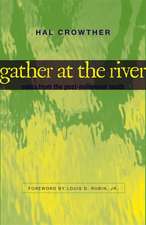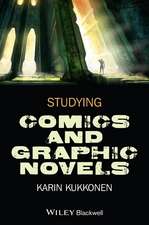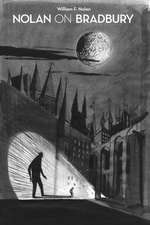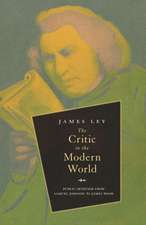A Certain Slant of Light: Regionalism and the Form of Southern and Midwestern Fiction: Southern Literary Studies (Hardcover)
Autor David Marion Holman Jr. Rubin, Louis Decimusen Limba Engleză Hardback – 31 oct 1995
In A Certain Slant of Light, David Marion Holman examines two prolific regional American literatures--those of the South and the Midwest--from about 1832 to 1925. By focusing on the role history played in the imaginations of selected writers of that period, he seeks to answer a perennial question: What is "midwestern" about midwestern literature, and what is "southern" about southern literature?
At least until 1910, Holman says, the fiction of the two regions was characterized by two very different modes--romance in the South and social realism in the Midwest. He explains that writers in the two regions responded to--often reacted against--mythologies of the American past that were diametrically opposed.
For the southerner, the past was the plantation, the aristocrat, and the Civil War. It could be both heritage and trap, as exemplified in the works of William Gilmore Simms, John Pendleton Kennedy, John Esten Cooke, Thomas Nelson Page, and George Washington Cable. Even in writing about the present, the southern writer, Holman maintains, had to confront, directly or indirectly, the ghosts of the past--ghosts that could be exorcised, vilified, or romanticized, but never ignored.
For the midwestern writer, the past was the pioneer and the settling of the frontier--a past of promise unfulfilled and unattained. The midwestern myth at once glorified the common man as the promise of America and deplored him as venal and narrow-minded. The promise of the frontier past and its perversion in the present had to be confronted, and from the mid-1800s to 1900 the dominant literary mode of this confrontation was realism, as seen in the work of Caroline Kirkland, Edward Eggleston, Edgar Watson Howe, Hamlin Garland, and Joseph Kirkland.
After the turn of the century, according to Holman, Ellen Glasgow in the South and Willa Cather in the Midwest began to break the mold of their respective regional traditions, their movements almost inversions of each other. By 1925 modernism had become a major force in American letters, providing the next generation of writers--perhaps best represented by Hemingway in the Midwest and Faulkner in the South--with new ways of confronting old ideologies, and these writers synthesized many of the premises of romance and realism. Ultimately the literatures of the two regions shared the goal of bringing past and present together into a meaningful and understandable relationship.
What emerges from Holman's unique study is solid documentation of a genuinely creative divergence in the literary imaginations of two kinds of American writing, each of which resulted in some of the most distinguished literature of the twentieth century.
Din seria Southern Literary Studies (Hardcover)
-
 Preț: 288.19 lei
Preț: 288.19 lei -
 Preț: 365.21 lei
Preț: 365.21 lei -
 Preț: 362.87 lei
Preț: 362.87 lei -
 Preț: 343.27 lei
Preț: 343.27 lei -
 Preț: 195.07 lei
Preț: 195.07 lei -
 Preț: 373.66 lei
Preț: 373.66 lei -
 Preț: 321.99 lei
Preț: 321.99 lei -
 Preț: 364.25 lei
Preț: 364.25 lei -
 Preț: 368.09 lei
Preț: 368.09 lei - 15%
 Preț: 545.20 lei
Preț: 545.20 lei -
 Preț: 322.37 lei
Preț: 322.37 lei -
 Preț: 225.46 lei
Preț: 225.46 lei -
 Preț: 327.77 lei
Preț: 327.77 lei -
 Preț: 289.94 lei
Preț: 289.94 lei -
 Preț: 288.53 lei
Preț: 288.53 lei -
 Preț: 324.28 lei
Preț: 324.28 lei -
 Preț: 288.96 lei
Preț: 288.96 lei -
 Preț: 361.73 lei
Preț: 361.73 lei -
 Preț: 362.33 lei
Preț: 362.33 lei -
 Preț: 365.39 lei
Preț: 365.39 lei -
 Preț: 263.22 lei
Preț: 263.22 lei -
 Preț: 339.03 lei
Preț: 339.03 lei -
 Preț: 287.09 lei
Preț: 287.09 lei -
 Preț: 365.59 lei
Preț: 365.59 lei -
 Preț: 362.11 lei
Preț: 362.11 lei -
 Preț: 342.89 lei
Preț: 342.89 lei -
 Preț: 328.52 lei
Preț: 328.52 lei -
 Preț: 362.33 lei
Preț: 362.33 lei -
 Preț: 366.16 lei
Preț: 366.16 lei -
 Preț: 396.08 lei
Preț: 396.08 lei -
 Preț: 247.84 lei
Preț: 247.84 lei -
 Preț: 320.46 lei
Preț: 320.46 lei -
 Preț: 326.03 lei
Preț: 326.03 lei -
 Preț: 363.26 lei
Preț: 363.26 lei -
 Preț: 326.25 lei
Preț: 326.25 lei -
 Preț: 333.80 lei
Preț: 333.80 lei -
 Preț: 288.96 lei
Preț: 288.96 lei -
 Preț: 288.19 lei
Preț: 288.19 lei -
 Preț: 331.41 lei
Preț: 331.41 lei -
 Preț: 287.05 lei
Preț: 287.05 lei -
 Preț: 323.90 lei
Preț: 323.90 lei -
 Preț: 208.96 lei
Preț: 208.96 lei -
 Preț: 478.11 lei
Preț: 478.11 lei -
 Preț: 287.82 lei
Preț: 287.82 lei -
 Preț: 326.25 lei
Preț: 326.25 lei -
 Preț: 328.52 lei
Preț: 328.52 lei -
 Preț: 290.31 lei
Preț: 290.31 lei -
 Preț: 345.18 lei
Preț: 345.18 lei -
 Preț: 322.17 lei
Preț: 322.17 lei
Preț: 249.75 lei
Nou
47.79€ • 51.10$ • 39.85£
Carte disponibilă
Livrare economică 27 martie-10 aprilie
Specificații
ISBN-10: 0807118702
Pagini: 160
Dimensiuni: 159 x 238 x 17 mm
Greutate: 0.41 kg
Ediția:Revised
Editura: Lsu Press
Seria Southern Literary Studies (Hardcover)








